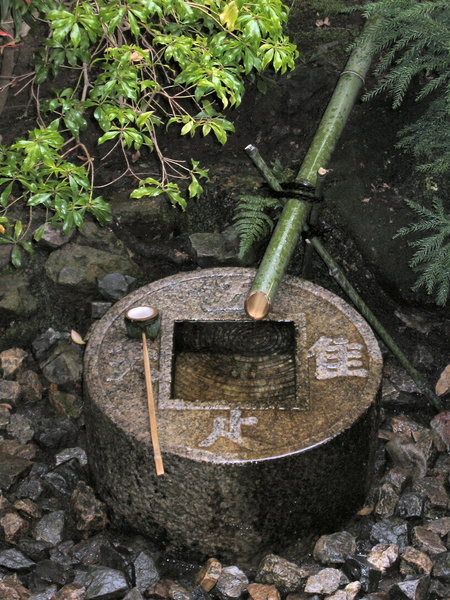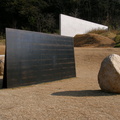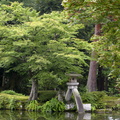
tsukubai au temple Ryoanji temple à Kyoto
The en:kanji written on the surface of the stone are without significance when read alone, but: When each is read in combination with 口 (kuchi), which the central bowl is meant to represent, the characters become 吾, 唯, 足, 知. This is read as "ware tada tare o shiru" and translates literally as "I only know plenty" (吾 = ware = I, 唯 = tada = only, 足 = tare = plenty, 知 = shiru = know).
This phrase has been translated in several ways, like
"I learn only to be contented." or
"I just know satisfaction." or
"The knowledge that is given is sufficient."
None of those translations seems appropriate - the meaning is rather
"What One Has is All One Needs.", one of the basically anti-materialistic teachings of Buddhism. The phrase would serve as a kind of mantra.
- Copyright
- Creative Commons (BY)
- Auteur
- MichaelMaggs
- Dimensions
- 1704*2272
- Fichier
- Tsukubai2.JPG
- Poids
- 928 Ko
- Albums
- Visites
- 72214
- Score
- pas de note
- Notez cette photo






